|
Displaying items by tag: prints
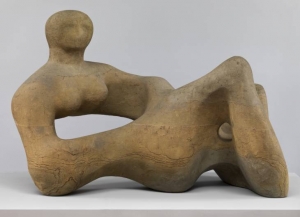
Two permanent galleries dedicated to the work of the English sculptor Henry Moore (1898-1986) opened on Tuesday, May 14, 2013 at the Tate Britain in London. The museum presents a collection of approximately 30 works including film, photographs, maquettes, drawings, and large-scale sculptures. Moore’s Recumbent Figure (1938), which was the first of the artist’s works to join the Tate’s collection, is also on view.
Moore, who served as a trustee of the Tate for two terms from 1941-1956, worked closely with the institution. The first gallery of his works explores the artist’s relationship to the museum and how the Tate amassed its Moore collection. The artist made a number of generous donations to the institution during his life including a set of prints, which he gave to the Tate in 1976 and 36 sculptures, which he bequeathed to the museum in 1978. The Tate currently owns over 600 of Moore’s works ranging in date from 1921-1984.
The Tate’s second gallery focuses on Moore’s array of public commissions and the process he used to create them. During the 1950s and 1960s, Moore worked almost entirely in plaster, which was then cast in bronze. Most of his works from this period are figurative or centered on the landscape and the natural world. Moore’s large-scale sculptures set in a wide-ranging array of settings from this time are some of his best-known works. The sculptures in this gallery are complemented by drawings and maquettes as well as films and photographs of Moore at work in his studio.
A highly successful sculptor, Moore used the money he made from his work to endow the Henry Moore Foundation, which continues to support education and the promotion of the arts.

Henri Matisse: La Gerbe is currently on view at the Los Angeles County Museum of Art and highlights the artist’s final commissioned work. Henri Matisse (1869-1954) created La Gerbe (The Sheaf), a 2,000 lb., 18 x 20-foot ceramic piece, in 1952 for the home of Los Angeles-based philanthropists Sidney and Frances Brody. Mrs. Brody promised the work to LACMA in honor of the museum’s 25th anniversary and donated it to the institution in 2010. This event marks the first time that La Gerbe has been displayed alongside its full-scale maquette, which is on loan from the University of California’s Hammer Museum.
Late in his career, Matisse developed his cut-out technique, which involved cutting organic shapes out of colored paper and arranging them on his studio’s walls. Giving the artist a renewed sense of freedom, Matisse lauded the technique for its immediacy and simplicity, which he believed helped him express his artistic urgencies more completely.
When he received the commission from the Brody’s, Matisse created a full-scale paper cut-out of his design, which he showed the couple during their visit to his studio in Nice, France. The Brody’s rejected the first design but accepted a second full-scale cut-out, which is the maquette included in LACMA’s exhibition. The final La Gerbe was executed in ceramic and consisted of 15 sections, which were shipped to Los Angeles in 1954 following the artist’s death. The work was installed on the Body’s patio wall where it remained until Frances’ death in 2009. The work was permanently installed at LACMA in 2010.
LACMA’s exhibition includes other major works from Matisse’s cut-out period including Madame de Pompadour (1951) and Jazz (1947), a historic book of 20 prints, which is considered the artists’ first major project using the cut-out technique.
The La Gerbe exhibition will be on view at LACMA through September 8, 2013.
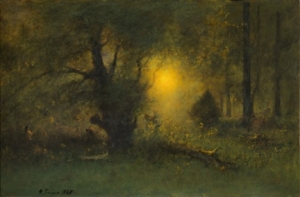
The Sterling and Francine Clark Institute in Williamstown, MA received its largest gift to date from New York-based collectors Frank Martucci, and his wife, Katherine. The Martuccis donated an impressive collection of works including eight landscapes by the 19th-century American painter George Inness (1825-1894).
The gift is extremely beneficial for the Clark, which focuses on collecting certain artists in depth; the museum currently boasts impressive collections of works by John Singer Sargent (1856-1925), Winslow Homer (1836-1910), and Pierre-Auguste Renoir (1841-1919). The Martuccis’ donation strengthens the Clark’s Inness holdings as they had only two paintings by the artist in their collection, which were acquired in 1955. The Martuccis also donated oil paintings by Eastman Johnson (1824-1906) and Gaston Latouche (1854-1913), an early watercolor landscape by Piet Mondrian (1872-1944), and five works by the Italian genre painter Mose Bianchi (1840-1904).
The new Inness landscapes will be featured in the exhibition George Inness: Gifts from Frank and Katherine Martucci from June 9 through September 8, 2013; the show will run concurrently with a major exhibition of paintings, watercolors, and prints by Winslow Homer.

The Baltimore Museum of Art has organized the first exhibition devoted to the Jewish-American artist Max Weber’s (1881-1961) formative years in Paris. Born in Russia, Weber emigrated to the United States at the age of 10. In 1905, after studying at the Pratt Institute in New York, he traveled to Paris. Weber soon became acquainted with a number of important modern artists including Henri Matisse (1869-1954), Pablo Picasso (1881-1973), and Henri Rousseau (1844-1910). Upon his return to New York in 1909, Weber helped introduce cubism to America.
Max Weber: Bringing Paris to New York explores Weber’s transformation from a classical painter to a bold, pioneering artist. The exhibition features over 30 paintings, prints, and drawings by Weber, many of which are on loan from the Estate of Max Weber. The show includes works by Matisse, who spent time as Weber’s instructor, Picasso, Rousseau, Paul Cezanne (1839-1906), and Henri de Toulouse-Lautrec (1864-1901).
Today, Weber is not the artist most readily associated with the cubist movement. However, at the peak of his career, Weber was a bona fide celebrity; in 1930 he became the first American artist to be given a solo exhibition at the Museum of Modern Art in New York.
Max Weber: Bringing Paris to New York is on view through June 23, 2013.
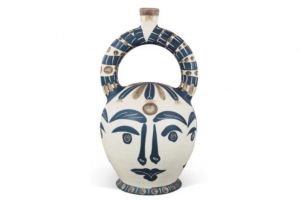
On March 19, 2013 Sotheby’s London held a sale of important ceramics by Pablo Picasso (1881-1973) from a private collection, which included a wider selection of additional ceramics and prints. The auction, which included 100 of Picasso’s plates, jugs, tiles, vases, and bowls, garnered $2.2 million, exceeding the auction’s high estimate of $2.1 million. All of Picasso’s works sold and 94% of the pieces went for well above their high estimates. The highlight of the auction was Picasso’s vase Gros Oiseau Vert, which sold for $157,732, nearly three times its high estimate.
Picasso’s experimentation with ceramics started in 1946 when he was introduced to the Madoura Pottery workshop in France. He began working with the shop’s owners, Suzanne and George Ramie, and embarked on an exploration of the new artistic medium, which he would soon master.
During his career, Picasso produced several thousand ceramic works and continued to experiment with the medium until his death. The works offered at Sotheby’s were part of a single-owner collection and provided a substantial overview of Picasso’s ceramics and illustrated the full scope of his exploration with the medium.
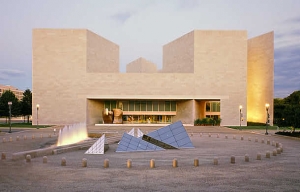
Officials at the National Gallery of Art in Washington, D.C. announced that the museum’s East Building will undergo a $30 million renovation, adding over 12,260-square-feet of exhibition space and a rooftop sculpture garden to the structure. Designed by famed architect I.M. Pei (b. 1917) and opened in 1978, the East Building houses the museum’s collection of modern paintings, drawings, sculptures, and prints as well as study and research centers and offices.
The East Building galleries will gradually close beginning in July and ending in December 2013; they will remain shuttered for approximately three years once renovations begin in January 2014. The project will create two sky-lit Tower Galleries within the East Building, which will be adjoined by an outdoor sculpture terrace. The East Building will continue to house the museum’s modern art collection and may see the addition of a room dedicated to the work of Mark Rothko (1903-1970). Museum officials hope that the additional exhibition space will inspire future donations to the National Gallery’s permanent collection.
The East Building project is part a Master Facilities Plan, which started in the museum’s West Building in 1999 and involved bolstering the building’s infrastructure and renovating its main floor and sculpture galleries. A number of established Washington-based philanthropists are donating $30 million for the East Building project; it is one of the largest gifts the museum has received from private donors in a decade.
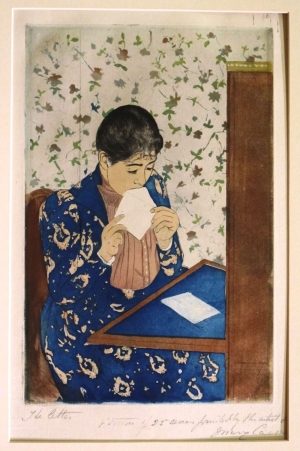
The New York Public Library is currently hosting the free exhibition Daring Methods: The Prints of Mary Cassatt, which spans Mary Cassatt’s (1844-1926) printmaking career from 1878 to 1898. In 1875, after having two works refused by the illustrious Paris Salon’s jury, Cassatt joined the Impressionist group at Edgar Degas’ (1834-1917) request. Cassatt created her earliest surviving prints a few years later in 1878, a year before she first exhibited with the Impressionists.
Cassatt, a legendary American artist who is well known for her tender paintings of women and children, had a bold approach to printmaking. She experimented with an array of print media, often repeating compositions and fervently reworking her copper printing plates in an effort to achieve the effects she desired.
Daring Methods tracks Cassatt’s evolution as a printmaker from her exploratory black-and-white beginnings to her mastery of the medium and her creation of technically striking color prints. The exhibition is organized chronologically to emphasize Cassatt’s development as a printmaker, illustrating the evolution of her subjects, compositions, and printing methods.
The show features 88 prints from the library’s archive, many of which have never been seen except on request. The works were donated to the New York Public Library in 1900 by Samuel Putnam Avery, a New York-based art dealer who worked closely with Cassatt.
Daring Methods: The Prints of Mary Cassatt will be on view in the New York Public Library’s Print and Stokes Gallery through June 22, 2013.
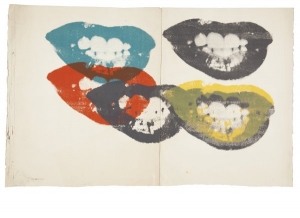
Christie’s online-only auction of 125 works by Andy Warhol (1928-1987), which ran from February 26-March 5, 2013 was a huge success. The sale, which included paintings, drawings, photographs, and prints, garnered $2.3 million, doubling its pre-sale estimate. Proceeds from the auction will benefit The Andy Warhol Foundation for the Visual Arts, which is dedicated to the advancement of the visual arts.
The auction, which was the first online-only Warhol sale, attracted 65,000 visitors and 263 bidders from 36 countries. The featured works had estimates ranging from $600 to $70,000 and many have never been on public view. Highlights from the sale included I Love Your Kiss Forever, a 1964 lithograph of Marilyn Monroe’s lips that fetched $90,000, more than 40 times its pre-sale estimate; In the Bottom of My Garden (circa 1956), a complete book of offset lithographs colored by hand that realized $80,250; and a t-shirt screen printed with Warhol’s Self-Portrait with Fright Wig, which garnered $47,500. The only lot that failed to sell was a graphite on paper drawing titled Madonna and Child (circa 1981), which was expected to bring $30,000-$40,000.
The next Andy Warhol @ Christie’s sale is in April 2013 and will be dedicated to Warhol’s legacy at the famed New York nightclub, Studio 54. Christie’s will host a number of online auctions throughout 2013 as part of an ongoing partnership with the Warhol Foundation.

United States authorities have seized over 2,200 pieces of art by pioneering American photographers including Alfred Stieglitz (1864-1946) and Edward Weston (1886-1958). The works, which were sent from Texas to New Jersey last year, were relocated to a warehouse in New York in July 2012. Before they were seized, the works were supposed to be shipped to Spain where they would be exhibited in a private home.
The U.S. Attorney’s Office in Newark, New Jersey announced in a court filing that the works, which are valued at approximately $16 million, were purchased with funds from a scheme that sold fake credits for renewable energy. The leader of the ploy is Philip Rivkin, owner and CEO of the Houston-based company, Green Diesel. Rivkin is accused of using money fraudulently funneled through his business to buy the photographs. Rivkin has not yet been charged with a crime.
The seized artworks include multiple Stieglitz prints including one his wife, the artist Georgia O’Keeffe (1887-1986), which was sold for $675,000 and an Edward Steichen (1879-1973) print titled Greta Garbo for Vanity Fair, which was purchased for $75,000. The court filing, which was announced on Friday, March 1, 2013, asks Rivkin to forfeit the works to U.S. authorities.

An exhibition titled At War with the Obvious: Photographs by William Eggleston is now on view at the Metropolitan Museum of Art in New York. William Eggleston (b. 1939) became pioneering force in modern photography during the 1960s and helped legitimize color photography as a respected art form. He also popularized the dye-transfer color process, a practice that until then was primarily used by commercial photographers. Eggleston, who remains a prominent figure in the modern art world, draws inspiration from a number of sources including the photography of Robert Frank (b. 1924) and Henri Cartier-Bresson (1908-2004) as well as the musical compositions of Johann Bach.
A native of the Mississippi delta region, Eggleston’s photographs often depict the inhabitants as well as the physical landscape of the area. Drawn to seemingly ordinary subject matters, Eggleston is able to evoke a sense of complexity and raw beauty from the mundane. Often featuring roadside snapshots, backyard barbeques, parking lots, and diners, Eggleston’s photographs act as a lush interpretation of the American vernacular.
At War with the Obvious commemorates the Met’s acquisition of 36 dye-transfer prints by Eggleston, which took place in the fall of 2012. The addition fleshed out the museum’s Eggleston collection and included his first portfolio of color photographs from 1974, 15 prints from his seminal book, William Eggleston’s Guide (1976), and seven other important works from a career that has spanned over 50 years.
At War with the Obvious features a number of Eggleston’s most recognizable images including Untitled (Peaches!) (1970), Untitled (Greenwood, Mississippi) (1980), and Untitled (Memphis) (1970). The exhibition will be on view through July 28, 2013.
|
|
|
|
|